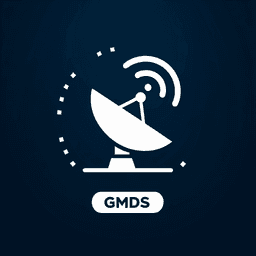
GMDSS Graphical Forecasts: Definition and Examples
February 27, 2025
GMDSS Graphical Forecasts
The Global Maritime Distress and Safety System (GMDSS) Graphical Forecasts are essential tools for mariners, providing visual representations of weather conditions and forecasts crucial for safe navigation. These forecasts are part of the GMDSS, an internationally agreed-upon set of safety procedures, types of equipment, and communication protocols used to increase safety and facilitate rescue operations in maritime environments.
Purpose and Importance: GMDSS Graphical Forecasts are designed to offer mariners a clear and concise visual understanding of weather patterns, including wind speed and direction, wave heights, and other meteorological phenomena that could impact maritime operations. By providing this information in a graphical format, sailors can quickly assess conditions and make informed decisions to ensure safety at sea.
Components of GMDSS Graphical Forecasts:
- Wind and Wave Charts: These charts display expected wind speeds and directions, as well as wave heights, helping mariners anticipate and prepare for challenging conditions.
- Pressure Systems: Graphical forecasts often include information on high and low-pressure systems, which can influence weather conditions significantly.
- Precipitation and Visibility: Forecasts may also provide data on expected precipitation and visibility, crucial for navigation and safety.
Accessing GMDSS Graphical Forecasts: Mariners can access these forecasts through various means, including satellite communications, NAVTEX, and online platforms provided by national meteorological services. These forecasts are updated regularly to provide the most current information available.
Relevance to Mariners: For sailors and maritime users, GMDSS Graphical Forecasts are invaluable for planning voyages, avoiding hazardous weather, and ensuring the safety of crew and vessel. By integrating these forecasts into their navigation practices, mariners can enhance their situational awareness and operational decision-making.
Understanding GMDSS Graphical Forecasts for Maritime Users
The Global Maritime Distress and Safety System (GMDSS) is a critical component of maritime safety, providing automated emergency signal communication for ships at sea. One of the key features of GMDSS is its graphical forecasts, which are essential for maritime navigation and safety.
What is the GMDSS Forecast?
The GMDSS forecast is an internationally adopted system that uses satellite technology to disseminate weather forecasts, marine navigational warnings, and other safety-related information to vessels. This system ensures that mariners receive timely and accurate information, which is crucial for safe navigation and decision-making at sea.
What are the Three Elements of GMDSS?
The GMDSS comprises several components designed to enhance maritime safety:
- Emergency Position-Indicating Radio Beacon (EPIRB): A device that transmits distress signals to satellites, helping to locate vessels in emergencies.
- NAVTEX: An international automated service for delivery of navigational and meteorological warnings and forecasts, as well as urgent maritime safety information to ships.
- Satellite and High-Frequency Communications: These systems provide global coverage for distress and safety communications.
What are the Four Areas of GMDSS?
The GMDSS operates over four sea areas, each defined by the type of communication coverage available:
- Sea Area A1: Within range of VHF coast stations with continuous DSC alerting.
- Sea Area A2: Beyond A1, within range of MF coast stations with continuous DSC alerting.
- Sea Area A3: Beyond A2, within coverage of Inmarsat geostationary satellites.
- Sea Area A4: Areas outside A1, A2, and A3, typically polar regions, covered by HF radio.
Why are GMDSS Graphical Forecasts Important?
GMDSS graphical forecasts provide mariners with visual representations of weather conditions, helping them to plan routes and make informed decisions. These forecasts include data on wind speed and direction, wave heights, and other critical meteorological information.
By integrating these forecasts into their navigation systems, maritime users can enhance safety and efficiency, reducing the risk of accidents and improving operational planning.




